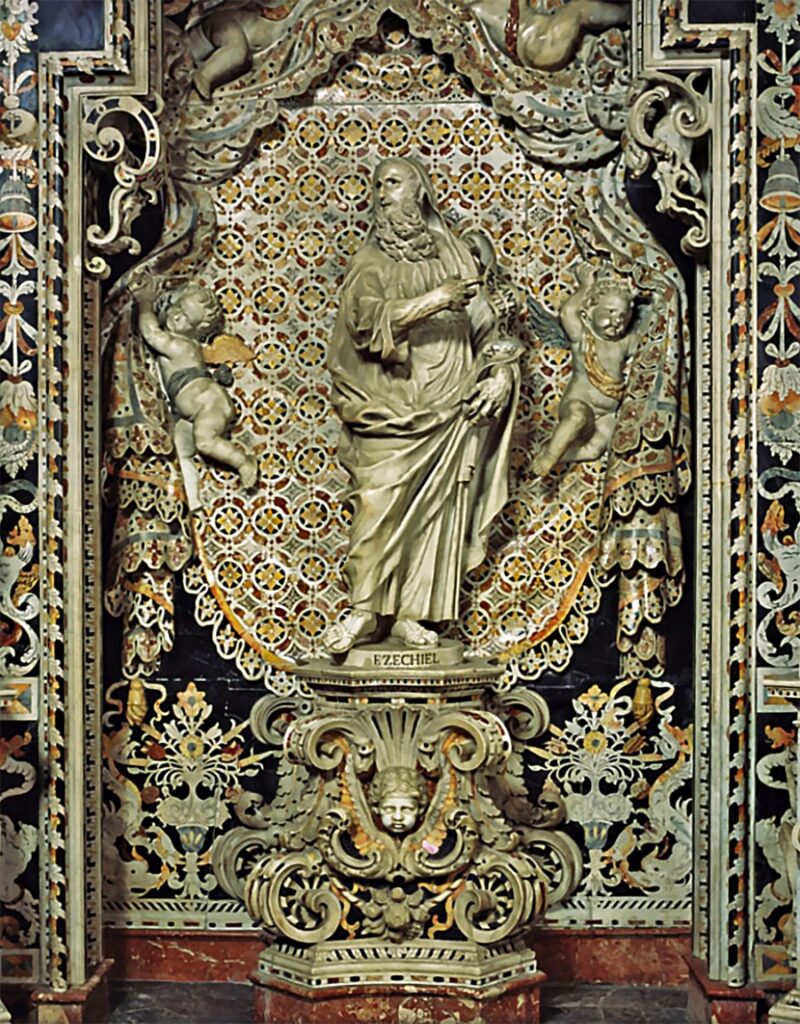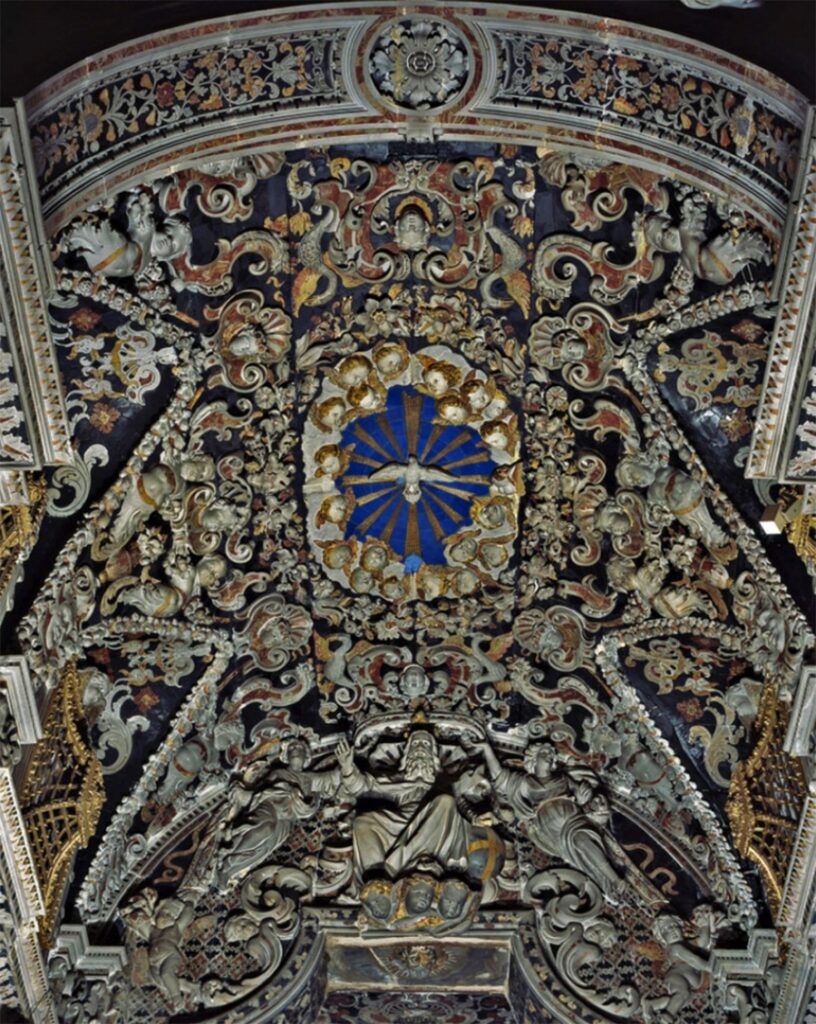With its volumes, the chapel dominates the area above the passageway and extends, with a central plan, covered by a hexagonal dome resting on a square and adorned with pairs of
pilasters
, alternating with the small windows inserted in the
lantern
.
The area’s layout consists a rectangular room containing an
altar
, flanked on the right by the sacristy and on the left by a transit area leading to a small bell tower.
The extraordinary decoration inside is introduced at the entrance by the imposing double-leaf yellow copper gate, designed by
Angelo Italia
and produced by
Gaetano Signorello
, as if to accompany the faithful on a journey of wonder.
The graceful dynamism of the ornaments and architecture that enliven the Chapel of the Crucifix is permeated by multicoloured inlays and sculptures representing the theme of Passion.
A courtly mysticism composed of rich forms,
inscriptions
and sculptures is also underlined by the emergence of biblical and theological meanings, visible immediately after crossing the red marble steps into the chapel. We seem to be witnessing the daring vision of a single project in which the decoration of every surface, even the smallest, is not spared by the heterogeneous inspiration of the artists, permeated by the rigorous approach of its client.
In contrast to the whiteness of the bare plaster of the dome, now stripped of the frescoes that once adorned it, as if interrupting a symphony of artistic combinations, four life-size statues of Old Testament
prophets
stand out in this sacred space, in the act of pointing to Christ and, implicitly, to his passion and death..

The
Crucifix
becomes the vanishing point of the entire environment and the centrepiece of various figurative cycles.
